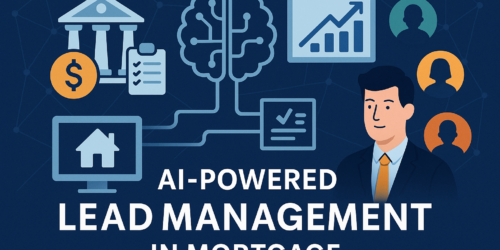What's in this article?
Machine learning has become the buzzword in virtually every industry that is looking to leverage relevant data to better compete. Consumer direct lenders understand the need to strategically manage critical data assets. However, where machine learning fits into the equation is not always as clear and implementation decisions surrounding the technology can be equally daunting.
Apprehension around relying on machine learning technology usually boils down to three issues: A misunderstanding of how the technology works, a belief that the technology is too sophisticated for certain tasks, and a fear that the technology is a replacement for individual subject matter expertise (also referred to as domain expertise). In this article, we work to bust those myths and explain how machine learning technology complements a lender’s existing lead management strategies.
How does Machine Learning work?
At the core, machine learning is essentially a method of applying a mathematical construct to a repetitive process. Machine learning applies mathematical equations to specific processes and automatically learns to predict outcomes. The technology relies on algorithms to analyze massive amounts of data and deliver predictions to achieve better business results over time.
A human with domain expertise can generally perform some of these tasks manually or through simple automations but machine learning amplifies the value delivered by performing the tasks in an automated, repeatable, and robust manner. Whereas a human is generally limited to optimizing two or maybe three dimensions at one time, a machine can perform global optimizations on hundreds of dimensions with ease. The automation allows the machine to find multi-dimensional correlations that would be nearly impossible to find manually.
Machine learning involves fitting existing data to an equation to predict an outcome of a critical business process. The capabilities of machine learning allow organizations to have access to an automated, unbiased view of critical business issues and to identify trends that a human would be unlikely to find.
What’s the Difference between Machine Learning and AI?
By definition, AI refers to using a computer to automate a task generally performed by humans. A simple example of AI is a human-generated decision tree (e.g., fixed rules or workflows) that assigns East and West Coast leads to different groups of loan officers. Historically, a human may have performed this task manually, but modern lead management systems allow an administrator to automate this assignment process. In other words, many consumer direct lenders are likely using some form of AI today.
Machine learning is a subset of AI in which algorithms are used to automatically learn from data to optimize a specific process or outcome. Machine learning allows for the prediction of an outcome in an automated, repeatable, and robust way. This systematic approach frees up time and resources to work on other business issues that are facing the organization.
AI is the technology that allows for the creation of systems that can simulate human intelligence, while machine learning learns from past data to predict future outcomes. While AI allows computers to automate human behavior, machine learning takes this a step further by applying algorithms to predict a specific outcome using historical data.
Misconceptions about Machine Learning
The first misconception about machine learning is that the technology is only useful for solving very complex problems. On the contrary, machine learning often provides the greatest value to simple problems. The automated, repeatable, and robust nature of the technology allows its users to eliminate time-consuming, repeatable tasks from existing processes. The peace of mind that comes with knowing a task is being executed in a reliable, accurate, and consistent manner is often a large component of the value proposition for machine learning.
The second misconception about machine learning is that it is a replacement for existing processes or human resources. Machine learning generally works best as an extension of existing processes and in combination with human domain expertise. Machine learning will use mathematics to uncover process strengths and identify potential areas for improvement. Historical data has many stories to tell and surfacing that information through machine learning applications will improve processes over time.
Machine learning supplements domain expertise to amplify results in an automated, repeatable, and robust way. And it does so without the biases that exist within human decision making. Domain experts are still an essential part of the process because they need to define and provide context for each problem they are trying to solve. In fact, the development of ProPair’s products were inspired by customer-driven insights from problems they were encountering across their sales teams. Customers identified their challenges and the ProPair team worked to build machine learning products that address those needs.
ProPair’s goal is to apply the power of machine learning to enable consumer direct lenders to improve their market position. Machine learning, like many technologies, is only as powerful as the people behind the scenes. For example, every sales team has its strengths and weaknesses, but the ProPair technology amplifies the strengths while minimizing the weaknesses. This advancement can tip the scales in favor of those leveraging the technology. Those that move early can start building the competitive edge needed to stand out in this crowded market before the opportunity has passed.



